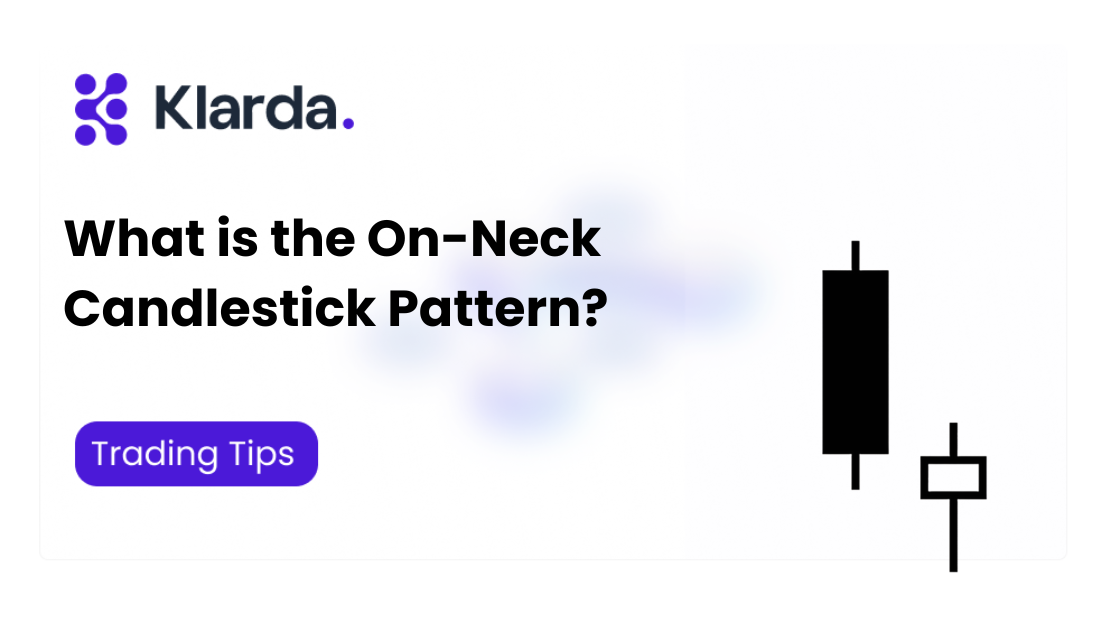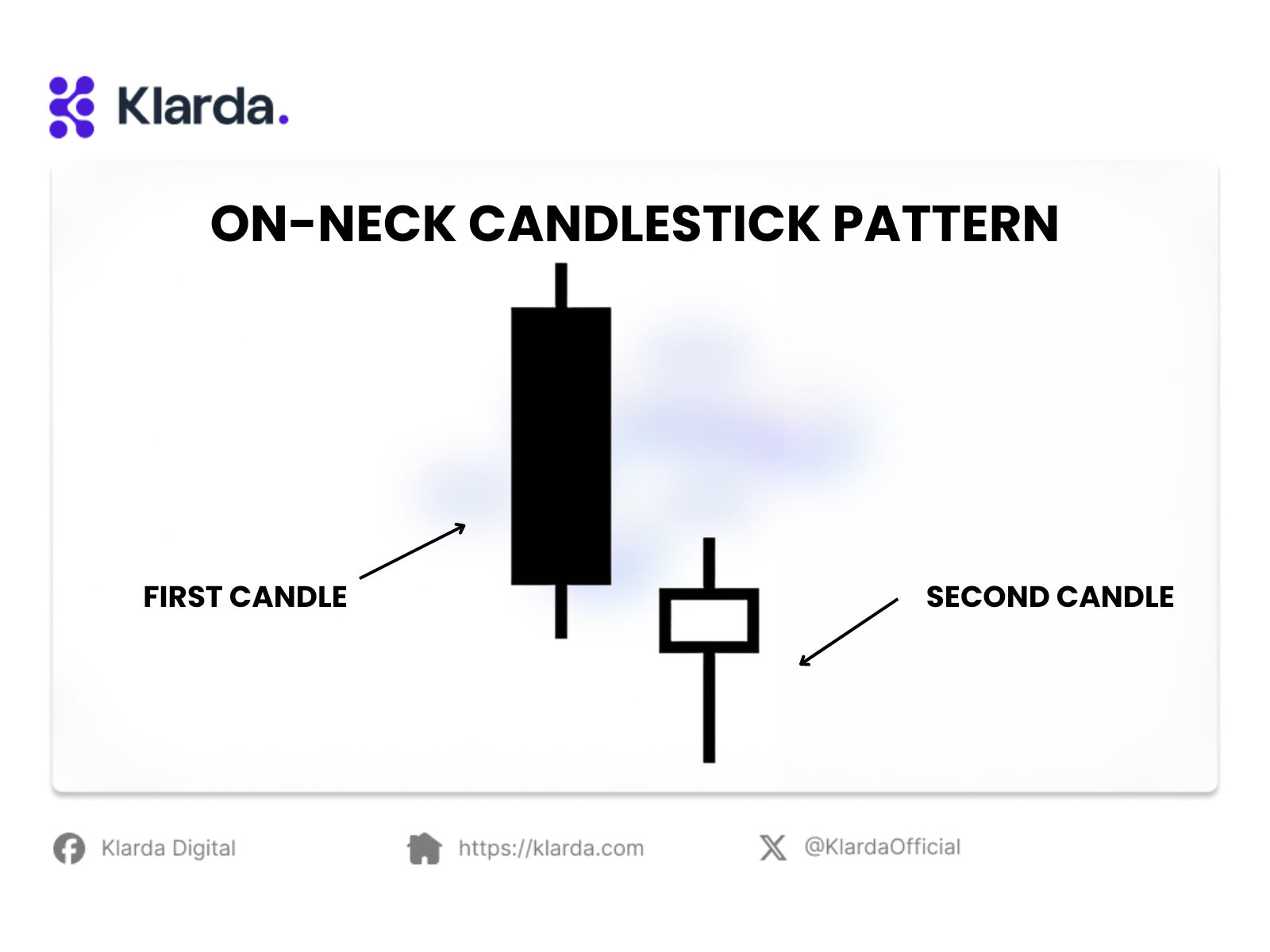On-Neck Candlestick Pattern
The On-Neck Candlestick Pattern is one of the popular candlestick patterns, but what does it signify and how can it be identified?
The On-Neck Candlestick Pattern is a crucial tool for investors and traders in the financial markets, helping them identify potential price reversals to make informed entry and exit decisions. But what exactly is the On-Neck Candlestick Pattern? Let’s explore it in detail in the following article.

KEY TAKEAWAY
- The On-Neck pattern signals a continuation of a downtrend or a possible pullback in an uptrend.
- The On-Neck pattern consists of a large bearish candle followed by a smaller bullish candle with a gap, signaling either a continuation of the downtrend or a potential reversal.
- The On-Neck pattern suggests exiting longs, setting stop-losses for shorts, initiating short trades, and using trailing stops to capitalize on a bearish trend or potential reversal.
- While the On-Neck candlestick pattern offers several strengths, it also has notable weaknesses.
WHAT IS THE ON-NECK CANDLESTICK PATTERN?
The On-Neck pattern, a type of thrusting pattern, signals either a continuation of a downtrend or a potential pullback in an uptrend.
It consists of:
- A long bearish candlestick with a substantial body that closes near its low, indicating strong selling pressure and a significant downward movement.
- A smaller bullish candlestick opening below the prior candle’s close and closing near the previous candle’s low.

While typically viewed as a bearish continuation pattern, the On-Neck pattern may also indicate a reversal if the second candle fails to fill the gap created by the first. Traders should analyze volume and momentum to determine whether the pattern will extend the downtrend or signal a bullish reversal.
FEATURES OF ON-NECK CANDLESTICK PATTERN
The On-Neck pattern is recognized by :
Pattern Emergence:
This pattern becomes evident after a clear downtrend has been established or during a pullback within an uptrend. It signals a continuation or potential shift in the current trend.
Large Bearish Candle:
The formation begins with a tall bearish candlestick, which indicates substantial downward price movement. This first candle has a long body and closes near its low, reflecting strong selling pressure.
Smaller Bullish Candle:
A smaller bullish candle opens below the previous candle’s close, gaps up, but fails to close above the prior candle's open, ending near the low of the first candle.
Visible Gap:
There is a noticeable gap between the close of the first bearish candle and the open of the subsequent bullish candle. This gap highlights the initial downward momentum and the subsequent, though insufficient, rally.
When these criteria are met and the pattern is confirmed, the On-Neck pattern typically suggests either a continuation of the bearish trend or a possible reversal. Traders should use additional confirmation tools to validate the pattern’s implications, as it can indicate further bearish movement or a shift in direction.
HOW TO TRADE WITH ON-NECK CANDLESTICK PATTERN?
The On-Neck pattern provides trading opportunities once confirmed:
- Exit Long Trades: Close existing long positions to secure profits and avoid potential losses from the expected decline.
- Place Stop-Loss: Set a stop-loss using the swing high as a reference for any new short positions. Adjust the stop as the downtrend progresses.
- Enter Short Orders: Initiate short trades with a stop-loss set at the close of the second candle. Aim to target near the recent swing low.
- Trail Stop Down: Actively manage the trade with a trailing stop to maximize gains during the downtrend.
By implementing appropriate stop-loss measures and targeting previous support zones, traders can take advantage of either a continuation of the bearish trend or a potential reversal to bullish.
PROS AND CONS OF THIS ON-NECK CANDLESTICK PATTERN
Although the On-Neck candlestick pattern has many strengths, it also has its weaknesses:
Pros:
- Signals Downtrend Continuation: Indicates the likelihood of ongoing bearish momentum.
- Clear Entry and Stop-Loss Points: Provides specific levels for initiating trades and managing risk.
- Accurate with Confirmation: Reliable when supported by additional indicators.
Cons:
- False Signals Possible: Can give misleading signals if the downtrend reverses.
- Requires Additional Confirmation: Should be verified with other technical indicators.
- Stop-Loss Risk: Risk of stop-loss being hit if the market turns upwards.
Key Differences:
- Trend Continuation vs. Reversal: May lead to a short-term upward reversal before resuming the downtrend.
- Short vs. Long Trades: Signals short trades, not long trades.
- False Signals: False signals are more common if the downtrend ends rather than due to volatility.
Above are our complete insights on the On-Neck candlestick pattern that investors should understand to effectively apply it in their trading strategy. We wish you success in using this tool in your trading! If you're looking for a reliable source for accurate and efficient information, download the Klarda app. With just a few simple steps, you'll easily access the most accurate information and advice.
Updated 8 months ago